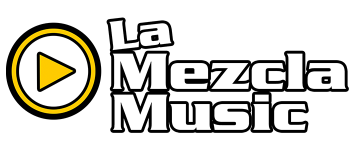When you trace reggaetón’s roots, one of the earliest, most essential chapters begins not in Puerto Rico but in Panama, with artists like El General and the movement known as reggae en español or plena panameña. Their innovation, adaptation, and cultural resistance laid the groundwork for what would become Latin urban music’s global wave.
In this article, we’ll explore how El General and his contemporaries bridged Jamaican dancehall and Spanish lyrics, how their sound migrated into Puerto Rico, and how his legacy still resonates today.
The Historical Setting: Panama, Jamaica & the Canal Zone
Migration, Labor & Cultural Exchange
The construction of the Panama Canal brought tens of thousands of workers from Jamaica, Barbados, Trinidad, and other Caribbean islands to Panama. These Afro-Caribbean communities carried their music, reggae, dancehall, and sound system culture into Panamanian life. Over time, their rhythms and musical aesthetics merged with the Spanish language, local culture, and urban realities.
Reggae en Español / Plena Panameña
By the 1980s, artists in Panama began adapting Jamaican riddims (instrumental backing tracks) into Spanish. This style, often called reggae en español, eventually evolved into what some refer to as plena panameña. The term plenain Panama is connected to these early experiments blending reggae, dancehall, and Caribbean musical influences.
One article describes how early Spanish reggae involved “the use of riddims that were popular in Jamaica and the rapping/singing of direct translations on the same beat.”
El General: The Voice Who Bridged Worlds
Early Life & Musical Beginnings
Edgardo Armando Franco, better known as El General, was born September 27, 1969 in Río Abajo, Panama. He started writing songs around the age of 12, often experimenting with improvised instrumentation in his neighborhood.
He grew up in a community with Jamaican heritage, which shaped his musical ear: Jamaican dancehall, reggae legends like Bob Marley and Burro Banton, and local Caribbean diasporic sound systems were part of his soundtrack.
Breakthrough Hits & Style
El General is widely credited with recording some of the first Spanish-language dancehall/reggae hits that gained mass appeal. Songs like “Tu Pum Pum,” “Te Ves Buena,” “Muévelo,” and “Rica y Apretadita” became touchstones.
For example, “Tu Pum Pum” emerged when a Jamaican producer invited him to experiment with a local interpretation of a Jamaican beat using Spanish lyrics.
An article from Vice captures how El General used dancehall riddims and Spanish vocals to craft a new sound:
“He was one of the artists who initiated the Spanish-language dancehall variety of reggae music … His 1988 release Estás Buena, opening with a Spanish-language cover of Shabba Ranks’ ‘Dem Bow,’ could pass as a straightforward dancehall album.”
His style combined approachable, catchy lyrics with the sonic energy of dancehall, accessible, danceable, yet culturally rooted.
International Reach & Influence
Though his music was born in Panama, it transcended national borders. El General’s songs found audiences in Puerto Rico, the U.S., and across Latin America. His presence laid part of the pathway for how reggaetón would later globalize.
In discussions of reggaetón’s origins, some sources note that El General’s team contributed to coining the term “reggaetón” by adding the “-ton” suffix to make the genre name more weighty.
The Migration to Puerto Rico & the Birth of Reggaetón
Panama’s reggae en español influenced early Puerto Rican underground music. Young artists and DJs in Puerto Rico imported riddims, Spanish lyrics, and the dancehall attitude, merging those with hip hop, bomba, plena, and local rhythms.
In many narratives, the Puerto Rican underground, which later evolved into reggaetón, built upon what artists like El General and Nando Boom had already begun, amplifying it with rap, urban life reflections, and new production techniques.
Thus, El General’s contributions helped provide a template: Spanish dancehall + flow + local expression = path toward what became reggaetón.
Legacy, Debates & the Panamanian Claim
Pioneer & Father-Figure
El General is often hailed as one of the fathers of Spanish reggae and a seminal influence on reggaetón. Many Panamanian artists and historians observe that without Panama’s early experiments, reggaetón’s structure would look different.
“Pioneers like El General and Renato claim to be the spark that ignited this musical revolution…” writes Remezcla, pointing out debates over contribution and recognition.
Personal Conflicts & Departure
In later years, El General openly expressed regrets about certain songs’ lyrical content, attributing part of his work to poor influences. In interviews, he stated:
“The lyrics [of my songs] caused conflict with my conscience … those songs played on all the radio stations. That was a trophy for Satan.”
He retired from mainstream music in 2004 and became a Jehovah’s Witness.
The Recognition Gap
Despite his foundational role, modern narratives sometimes center Puerto Rican artists in reggaetón’s origin story, overshadowing Panama’s contributions. Scholars and fans often debate how much credit El General and his peers should receive.
Some point out that although reggaetón is now globally associated with Puerto Rico, the genre’s roots are multinational, including Panama.
Why El General Still Matters
- He legitimized Spanish dancehall as a commercial vernacular, proving that Caribbean sound + Spanish voice could command attention.
- His tracks influenced generations of producers and artists who saw Spanish + riddim fusion as viable and exciting.
- His career reveals the complexity of cultural ownership, migration, adaptation, and credit in Latin music history.
- His story offers lessons on how genres evolve not just through innovation, but through exchange, migration, and hybrid identity.

